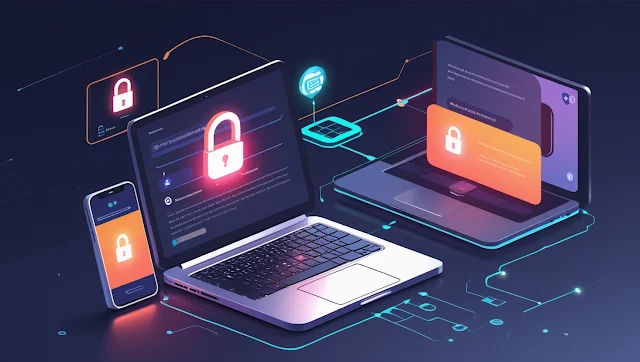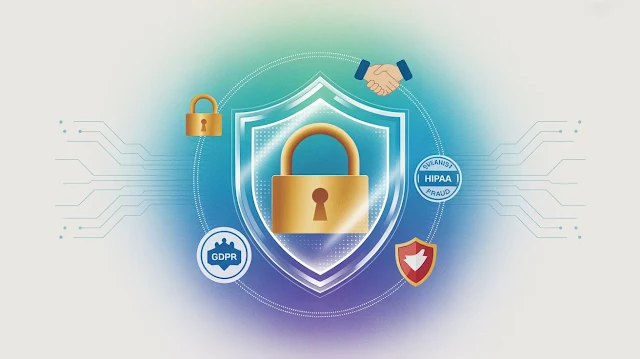Everything You Need to Know About Two-Factor Authentication (2FA) in 2025
Cybersecurity threats continue to grow more sophisticated in 2025, making it essential for individuals and organizations to implement stronger forms of identity verification. Two-Factor Authentication (2FA) has become one of the most widely adopted and effective methods for securing user accounts and sensitive systems. This article offers a comprehensive and in-depth look at 2FA: what it is, how it works, the latest technologies, benefits, vulnerabilities, and real-world applications.
🔐 What is Two-Factor Authentication?
Two-Factor Authentication (2FA) is a security process that requires users to provide two different types of verification to access a system, account, or device. It adds an extra layer of protection beyond the standard username and password.
The two factors typically include:
- Something you know (e.g., a password or PIN)
- Something you have (e.g., a smartphone or hardware token)
By requiring two distinct forms of identification, 2FA significantly reduces the chances of unauthorized access—even if a password is compromised.
🔄 How Does 2FA Work?
The 2FA process usually unfolds in these steps:
- The user logs in with their username and password.
- The system prompts for a second factor (e.g., a code sent via SMS or an authentication app).
- After successful verification, access is granted.
Some systems use adaptive or contextual 2FA, where the second factor is only requested under suspicious conditions like unfamiliar locations, devices, or IP addresses.
🛠️ Types of 2FA Methods
There are several forms of two-factor authentication in use today, each with its own strengths and weaknesses:
1. SMS-Based CodesA temporary code is sent to the user’s phone.
🔗 Twilio Verify (SMS 2FA)- Pros: Easy to implement and widely supported.
- Cons: Vulnerable to SIM swapping and phishing.
2. Authentication Apps (e.g., Google Authenticator, Authy)
Generate time-based one-time passwords (TOTP).- More secure than SMS.
- Require users to install and manage the app.
3. Push Notifications (e.g., Duo Mobile, Microsoft Authenticator)
Apps send a prompt for users to approve login.- Easy and user-friendly.
- Can be combined with biometrics for more security.
4. Hardware Tokens (e.g., YubiKey)
Physical devices that generate codes or connect via USB/NFC.- Excellent security.
- Ideal for high-risk or highly regulated environments.
5. Biometrics
Uses fingerprint, face, or retina recognition.
- Highly convenient.
- Requires devices that support biometric scanning.
✅ Benefits of Using 2FA
- Stronger Security: Reduces risk from password theft or brute-force attacks.
- Regulatory Compliance: Helps meet standards like GDPR, HIPAA, and PCI DSS.
- Improved Trust: Users are more confident when logging into secure systems.
- Fraud Prevention: Especially in financial transactions and account changes.
⚠️ Limitations and Vulnerabilities
- Phishing Attacks: Some hackers create fake login pages to steal 2FA codes.
- SIM Swapping: Attackers can hijack phone numbers to intercept SMS codes.
- Man-in-the-Middle Attacks: Sophisticated actors may intercept 2FA responses in real-time.
- User Fatigue: Overuse or poorly implemented systems may frustrate users.
🔒 Best Practices for Implementing 2FA
- Use App or Hardware-Based 2FA Over SMS.
- Educate Users About Threats and How to Recognize Phishing.
- Enforce 2FA on All Privileged Accounts.
- Keep Systems Updated and Monitor for New Threats.
- Provide Backup or Recovery Options for Users.
🧠 Real-World Use Cases
- Banking: Financial institutions use app-based 2FA to secure mobile banking and online transactions.
- Healthcare: Hospitals and clinics enforce 2FA to protect access to electronic health records (EHR).
- Cloud Platforms: Providers like AWS (IAM MFA) and Google Cloud Identity MFA require admins to enable 2FA.
- E-Commerce: Online shops protect seller and buyer accounts from fraud.
✅ Conclusion
Two-Factor Authentication is a foundational tool in modern cybersecurity. While no system is completely foolproof, 2FA greatly enhances protection against many common threats. By selecting the right methods, educating users, and regularly updating your practices, organizations can significantly reduce their risk surface in 2025 and beyond.
❓ Frequently Asked Questions (FAQ)
Q1: Is 2FA the same as Multi-Factor Authentication (MFA)?
2FA is a subset of MFA—it specifically requires two factors, whereas MFA can involve more.
Q2: Can 2FA be hacked?
Yes, but it's significantly more difficult. Using app-based or hardware 2FA makes it much safer.
Q3: Is biometric 2FA secure?
Yes, though it raises privacy and data protection concerns if biometric data is stored improperly.
📌 Tip: Combine a strong password manager with 2FA to achieve optimal account security.


.png)













